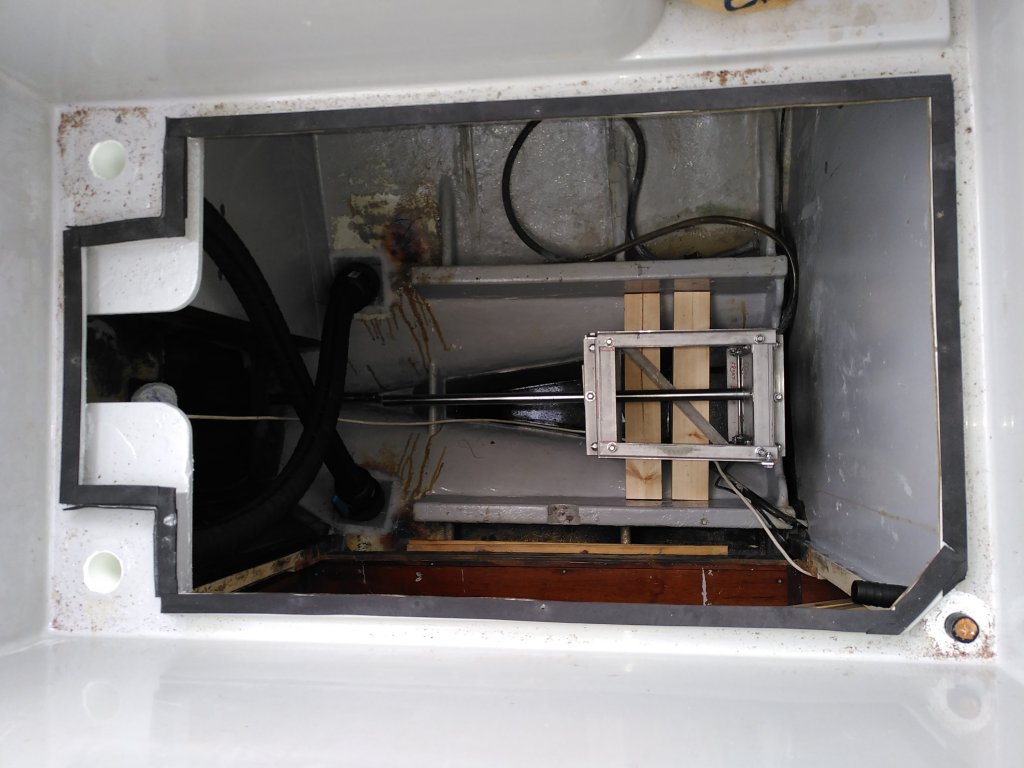I suppose the most significant progress is that we has a guest sleeping on board with us for the first time. Stephen, one of our sons, in our social bubble, joined us for the night. The saloon single berth got a good rating.
Today, I ended up working for the morning but Jane and Stephen took the house battery bank apart and then reassembled it with thickened epoxy as glue. They have then coated nearly all of it with epoxy and added some fillet joints to strengthen the joint between the sides and the base.
Then we spent some time going over the design and plans for the electrics.
Meanwhile, one of the lasts part of our drivetrain had arrived (the shaft from the reduction belt pulley to be connected to the propeller shaft via the Aquadrive) so we have been able to lay things out and make sure everything fits (it does – just).

I’ve had to redesign the way the electric motor rests on the engine mounts so that we can support this shaft at the propeller shaft end. So a few more bits of metal and one extra bearing are now on order.
This shows the base of the box for the motor batteries.

It is slightly oversized at present but there is just space for it and still be able to open/close the seacocks. Access to the Aquadrive (which will be partly under the battery box) will be by making the new bulkhead to the after cabin open-able (after all no carbon monoxide or diesel fumes to worry about).
The house battery bank goes above the motor and the motor battery bank.
The two inverters go on the bulkhead forward of the motor and just above it (grey bulkhead at the bottom of the previous two images).
Given how tight everything is I’m sure we are going to have to pay attention to air flows and ventilation to ensure that the motor, the motor controller and the batteries don’t overheat. However, I’m pretty confident that we are going to be able to make that work fine for most climates with passive ventilation. We will probably need to assist that with fans in the tropics (but if it is hot there should be plenty of solar power available to charge things.
The centre of gravity of the batteries has moved up a little from what I had hoped for. However, I don’t think it is very different to when the diesel tanks were full (and it doesn’t move around). Fortunately, we have saved a whole lot of weight in other places and when we switch to dyneema rigging we will save a whole load of very high up weight.
So not huge visible progress but a lot of thinking and planning will help next steps.

Leave a comment